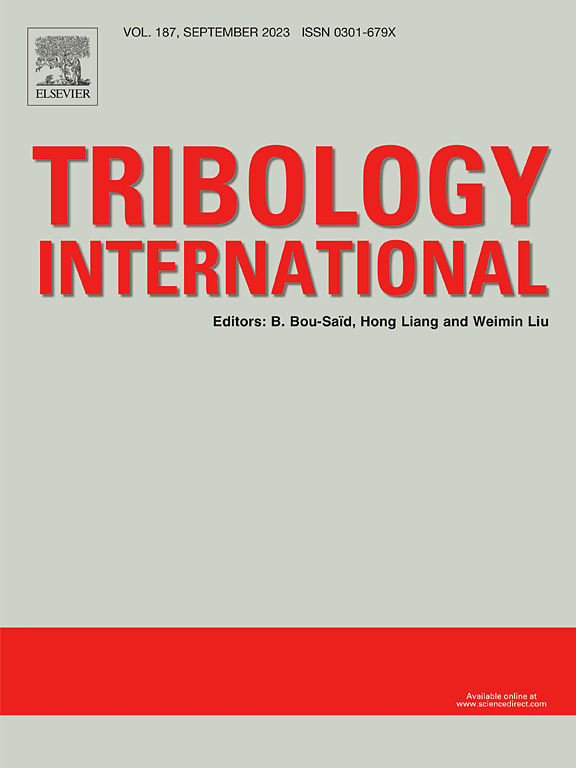Study on the microscopic removal mechanism of interconnect metal Co using AFM with Si, SiO2, and diamond probes
IF 6.1
1区 工程技术
Q1 ENGINEERING, MECHANICAL
引用次数: 0
Abstract
Cobalt is a promising alternative to copper as interconnect metal when semiconductor technology advances to 5 nm nodes and below. Co needs to be polished but the polishing mechanism is not clear enough. This study employs AFM to investigate the microscopic removal mechanism of Co CMP in an air environment, using Si, SiO2, and diamond probes as abrasives. The microstructure and chemical state of the scribed Co surface were analyzed using Hertz contact theory, AFM, SEM, XPS, EDS, and HRTEM. The results demonstrate that the probe material and applied load significantly affect the wear depth and width. The depth obtained by SiO2, Si, and diamond probes is about 1, 7, and 70 nm, respectively, under the same load. The Si and diamond probes primarily remove material through mechanical plowing, whereas the SiO2 probe combines mechanical plowing with chemical reactions. XPS analyses revealed that the SiO2 probe facilitated the formation of more Co3O4 on the Co surface. HRTEM results showed a Co oxide film (∼1.5 nm thickness) and an amorphous Co layer (∼15 nm thickness) in the scribed region. The oxide film enhanced adhesion, forming a protective layer that hindered further material removal and reduced friction. This study provides theoretical support for optimizing Co CMP processes, which is crucial to next-generation integrated circuits.
求助全文
约1分钟内获得全文
求助全文
来源期刊

Tribology International
工程技术-工程:机械
CiteScore
10.10
自引率
16.10%
发文量
627
审稿时长
35 days
期刊介绍:
Tribology is the science of rubbing surfaces and contributes to every facet of our everyday life, from live cell friction to engine lubrication and seismology. As such tribology is truly multidisciplinary and this extraordinary breadth of scientific interest is reflected in the scope of Tribology International.
Tribology International seeks to publish original research papers of the highest scientific quality to provide an archival resource for scientists from all backgrounds. Written contributions are invited reporting experimental and modelling studies both in established areas of tribology and emerging fields. Scientific topics include the physics or chemistry of tribo-surfaces, bio-tribology, surface engineering and materials, contact mechanics, nano-tribology, lubricants and hydrodynamic lubrication.
 求助内容:
求助内容: 应助结果提醒方式:
应助结果提醒方式:


